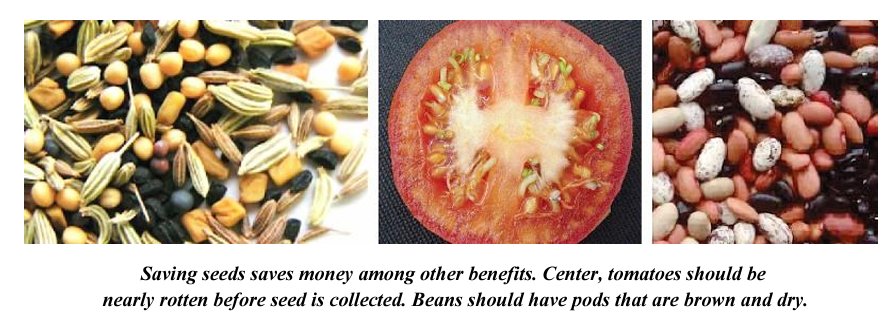By Jean Fefer & Will Isbell Harris County Master Gardener

Seed saving is fun and interesting, but there are also some more practical reasons to do it. It saves you money, provides seed security, leads to regional adaptation, and quality control. You can also learn a lot. There are some simple rules to follow:
– Choose the best plants for seed saving
– Make sure the seeds are mature before gathering. This stage will vary with each plant. Beans should have pods that are brown and dry. Tomatoes should be near rotten.
– Some like tomato require pretreatment before storing.
– Store properly in either cool or cold conditions
– Store in plastic or glass
– All seeds must be completely dry.
– Label with name and date collected and if the parent plant is not your own you need permission to gather.
Gathering seed from parks and arboretums is often illegal. Information about the plant will increase the success of reproducing it by planting the seed you saved.
– Open-pollinated plants are those pollinated naturally by insects, wind, and water. These seeds can reproduce the original plant if they are separated from other varieties of the same species. If other varieties are near, cross-pollination can occur. This is likely in squash and corn.
– Hybrids are products of a planned cross between two different varieties of the same plant species. These seeds will likely not produce a plant identical to the one they came from. They could revert back to one of the parent plants. If you are growing food this is not a good thing. If you are experimenting, it’s fun to see what happens.
– Heirlooms are plants with a past and saving this seed helps to preserve biodiversity and promote sustainability. These seeds are most likely to reproduce the original plant.
– Determine whether this seed has dormancies that need to be overcome by pretreating, Bluebonnets, for example require scarification(breaking through the seed coat) to start the germination process.
In addition to the practical reasons to save seeds there is the value gained by doing it with children. It is a great hands-on example of a life-cycle in which they can participate . * * *

